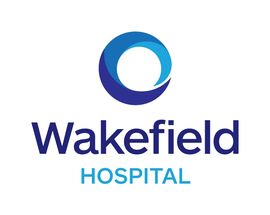Wellington > Private Hospitals & Specialists >
Wakefield Hospital - Vascular Surgery
Private Surgical Service, Vascular Surgery
Description
Wakefield Hospital is the largest private hospital in the Wellington region. It is located in the suburb of Newtown and is owned and operated by parent company Evolution Healthcare (NZ) Limited.
Based in the heart of Wellington, Wakefield Hospital offers a wide range of high-quality private healthcare services with a team of experienced specialists and the latest in techniques and equipment available. We have a proud history of offering our patients the very best of care in our modern and comfortable facilities.
Private healthcare allows choice, flexibility and access to specialists who use the latest techniques in treatment. You are free to nominate your specialist and can expect your consultation and treatment in a timely manner without waiting list restrictions. Early treatment and intervention is often pivotal in ensuring the best outcome for patients.
Consultants
-
Dr Richard Evans
Vascular Surgeon
-

Dr Lupe Taumoepeau
Vascular & Endovascular Surgeon
-

Dr Kes Wicks
Vascular & Endovascular Surgeon
Procedures / Treatments
Endovascular therapy: a long thin tube (catheter) is inserted through a small incision (cut) made in the groin in the groin. The catheter is guided to the site of the aneurysm and a graft (synthetic tube) or stent (a metal tube) is put in place to relieve the pressure on the aneurysm. Conventional: an incision is made in the abdomen or chest and the weakened part of the aorta is replaced with a graft.
Endovascular therapy: a long thin tube (catheter) is inserted through a small incision (cut) made in the groin in the groin. The catheter is guided to the site of the aneurysm and a graft (synthetic tube) or stent (a metal tube) is put in place to relieve the pressure on the aneurysm. Conventional: an incision is made in the abdomen or chest and the weakened part of the aorta is replaced with a graft.
Endovascular therapy: a long thin tube (catheter) is inserted through a small incision (cut) made in the groin in the groin. The catheter is guided to the site of the aneurysm and a graft (synthetic tube) or stent (a metal tube) is put in place to relieve the pressure on the aneurysm.
Conventional: an incision is made in the abdomen or chest and the weakened part of the aorta is replaced with a graft.
Carotid Endarterectomy: an incision (cut) is made along the side of the neck, the carotid artery opened and the fatty material (plaque) removed. The artery is closed with a patch. Minimally invasive: a long thin tube (catheter) is inserted through a small incision made in the groin. The catheter is guided to the carotid artery where a balloon attached to the catheter is inflated to clear the blockage or a small metal tube (stent) is put in place to hold the blood vessel open.
Carotid Endarterectomy: an incision (cut) is made along the side of the neck, the carotid artery opened and the fatty material (plaque) removed. The artery is closed with a patch. Minimally invasive: a long thin tube (catheter) is inserted through a small incision made in the groin. The catheter is guided to the carotid artery where a balloon attached to the catheter is inflated to clear the blockage or a small metal tube (stent) is put in place to hold the blood vessel open.
Carotid Endarterectomy: an incision (cut) is made along the side of the neck, the carotid artery opened and the fatty material (plaque) removed. The artery is closed with a patch.
Minimally invasive: a long thin tube (catheter) is inserted through a small incision made in the groin. The catheter is guided to the carotid artery where a balloon attached to the catheter is inflated to clear the blockage or a small metal tube (stent) is put in place to hold the blood vessel open.
Balloon Angioplasty: a long thin tube (catheter) with a tiny balloon attached to the tip is inserted through a small incision (cut) made over an artery in your arm or groin. The catheter is guided through the arteries to the site of the blockage where the balloon is inflated to clear the blockage and, in some cases, a metal tube (stent) is inserted into the artery to keep it open. Endarterectomy: incisions are made in the affected limb and artery and the fatty material (plaque) in the blood vessel is removed. Bypass Surgery: a piece of a vein from another part of the body or a tube made of synthetic material (graft) is used to join the artery above and below the narrowed or blocked section. This creates a detour and a new path for the blood to flow around the blocked segment.
Balloon Angioplasty: a long thin tube (catheter) with a tiny balloon attached to the tip is inserted through a small incision (cut) made over an artery in your arm or groin. The catheter is guided through the arteries to the site of the blockage where the balloon is inflated to clear the blockage and, in some cases, a metal tube (stent) is inserted into the artery to keep it open. Endarterectomy: incisions are made in the affected limb and artery and the fatty material (plaque) in the blood vessel is removed. Bypass Surgery: a piece of a vein from another part of the body or a tube made of synthetic material (graft) is used to join the artery above and below the narrowed or blocked section. This creates a detour and a new path for the blood to flow around the blocked segment.
Balloon Angioplasty: a long thin tube (catheter) with a tiny balloon attached to the tip is inserted through a small incision (cut) made over an artery in your arm or groin. The catheter is guided through the arteries to the site of the blockage where the balloon is inflated to clear the blockage and, in some cases, a metal tube (stent) is inserted into the artery to keep it open.
Endarterectomy: incisions are made in the affected limb and artery and the fatty material (plaque) in the blood vessel is removed.
Bypass Surgery: a piece of a vein from another part of the body or a tube made of synthetic material (graft) is used to join the artery above and below the narrowed or blocked section. This creates a detour and a new path for the blood to flow around the blocked segment.
Balloon Angioplasty: a long thin tube (catheter) with a tiny balloon attached to the tip is inserted through a small incision (cut) made in your groin. The catheter is guided through the arteries to the site of the blockage where the balloon is inflated to clear the blockage and, in some cases, a metal tube (stent) is inserted into the artery to keep it open. Endarterectomy: an incision is made over the artery, the artery opened and the fatty material (plaque) removed. Bypass Surgery: a piece of a vein from another part of the body or a tube made of synthetic material (graft) is used to join the artery above and below the narrowed or blocked section. This creates a detour and a new path for the blood to flow around the blocked segment.
Balloon Angioplasty: a long thin tube (catheter) with a tiny balloon attached to the tip is inserted through a small incision (cut) made in your groin. The catheter is guided through the arteries to the site of the blockage where the balloon is inflated to clear the blockage and, in some cases, a metal tube (stent) is inserted into the artery to keep it open. Endarterectomy: an incision is made over the artery, the artery opened and the fatty material (plaque) removed. Bypass Surgery: a piece of a vein from another part of the body or a tube made of synthetic material (graft) is used to join the artery above and below the narrowed or blocked section. This creates a detour and a new path for the blood to flow around the blocked segment.
Balloon Angioplasty: a long thin tube (catheter) with a tiny balloon attached to the tip is inserted through a small incision (cut) made in your groin. The catheter is guided through the arteries to the site of the blockage where the balloon is inflated to clear the blockage and, in some cases, a metal tube (stent) is inserted into the artery to keep it open.
Endarterectomy: an incision is made over the artery, the artery opened and the fatty material (plaque) removed.
Bypass Surgery: a piece of a vein from another part of the body or a tube made of synthetic material (graft) is used to join the artery above and below the narrowed or blocked section. This creates a detour and a new path for the blood to flow around the blocked segment.
Sclerotherapy: a tiny needle is used to inject a chemical solution into the vein that causes the vein to collapse. This approach is recommended for small varicose veins only. Vein stripping: the varicose veins are cut out and the veins that branch off them are tied off. The cuts (incisions) made in the skin are closed with sutures. Phlebectomy: small cuts (incisions) are made in the leg and the varicose veins are pulled out with a tiny hook-like instrument. The cuts are closed with tape rather than sutures and, once healed, are almost invisible.
Sclerotherapy: a tiny needle is used to inject a chemical solution into the vein that causes the vein to collapse. This approach is recommended for small varicose veins only. Vein stripping: the varicose veins are cut out and the veins that branch off them are tied off. The cuts (incisions) made in the skin are closed with sutures. Phlebectomy: small cuts (incisions) are made in the leg and the varicose veins are pulled out with a tiny hook-like instrument. The cuts are closed with tape rather than sutures and, once healed, are almost invisible.
Sclerotherapy: a tiny needle is used to inject a chemical solution into the vein that causes the vein to collapse. This approach is recommended for small varicose veins only.
Vein stripping: the varicose veins are cut out and the veins that branch off them are tied off. The cuts (incisions) made in the skin are closed with sutures.
Phlebectomy: small cuts (incisions) are made in the leg and the varicose veins are pulled out with a tiny hook-like instrument. The cuts are closed with tape rather than sutures and, once healed, are almost invisible.
Visiting Hours
Daily 9:00am to 9:00pm.
Please note that Level 2 (the Cardiac Ward), ICU and HDU are closed for a rest period between 1:00pm and 3:00pm daily.
Refreshments
Snacks can be purchased from the cafeteria between 9:00am and 2:00pm Monday to Friday.
Parking
Free parking is provided within the hospital grounds.
Accommodation
Wakefield Hospital has a limited number of standard apartments on site which can be booked for family if required. These units sleep up to four people and must be booked through our reception prior to your hospital admission.
To book an apartment please email us or contact the hospital reception on (04) 381 8100 - Extn 0.
Pharmacy
Nearest community pharmacy here
Website
Contact Details
Wakefield Hospital
Wellington
-
Phone
(04) 381 8100
-
Fax
(04) 381 8101
Email
Website
Toll Free Phone: 0800 WAKEFIELD (0800 925 334)
Florence Street (off Riddiford Street)
Newtown
Wellington
Street Address
Florence Street (off Riddiford Street)
Newtown
Wellington
Postal Address
Wakefield Hospital
Private Bag 7909
Wellington 6242
Was this page helpful?
This page was last updated at 11:30AM on May 30, 2024. This information is reviewed and edited by Wakefield Hospital - Vascular Surgery.

